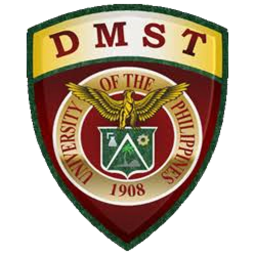The University of the Philippines (UP) is the leading educational institution of the country producing graduates who specialize in all fields, from arts to the sciences, and pioneering many programs that have become part of Philippine society. Among these programs is the Reserve Officers’ Training Corps (ROTC) that was started as early as 1912 in the form of “military drill.” The ROTC program aims to promote civil service, discipline, and order through military training.
Having realized the need to develop a flexible indigenous military force that can be mobilized in the event of war, both Filipino and American leaders started military training in the University in 1912 under the Philippine Constabulary with Cpt. Silvino Gallardo as the first military instructor. Military training then was mainly in infantry tactics and the use of the rifle. Training during this period had many limitations, no definite program of instruction, and insufficient training equipment. No army commissions for future officers were to be expected from this training.
The need for able-bodied Filipino reservists became apparent with the outbreak of World War I. This led to the creation of the Philippine Reserve Officers Training Corps (PROTC) in 1916 in UP. When the United States became involved in the war, so did the Philippines. Many cadets, students, and faculty members volunteered for service in the Philippine National Guard. Some students and faculty members of UP Los Baños also signed up for deployment to Europe. This came to be known as the Loyalty Day, celebrated in UPLB in October every year.
On 17 March 1922, then UP President Guy Potter Wharton Benton and the Board of Regents signed the creation of the UP Department of Military Science and Tactics, with Captain Chester Arthur Davis of the US Army as professor and first official Commandant of Cadets. Since then the basic infantry course became compulsory and a prerequisite for graduation for all physically-fit male students of the university.
A Field Artillery unit was established in UP on 26 October 1929. With the help of Major General Douglas MacArthur, then Philippine Department Commander, the UP ROTC managed to loan two Field Artillery batteries from the Army. Captain Fidel V. Segundo and Lt. Alejandro D. Garcia served as instructors for the unit. Cadets were trained in the operation of artillery pieces and drilled for three hours each week. During ceremonial parades and reviews of the ROTC, artillery cadets fired 21-gun or 19-gun salutes to honor guest dignitaries.
With the signing of the National Defence Act of 1935 promulgated the creation of an independent Philippine Army—formally founded on 2 December 1935—as well as the formal establishment of the ROTC program in the country.
Many members of the UP Corps of Cadets volunteered to fight during the Second World War, defending the Philippines from foreign aggression and maintaining the freedom and independence of our people.
After the war in 1949, much of the University—including the administrative seat and the DMST—was transferred to the campus in UP Diliman. General Lim Hall, located where the National Engineering Center is now, became the new home of the UP DMST. The General Antonio Luna Parade Grounds (GALPG), more commonly known as the Sunken Garden, became UP ROTC’s new official parade grounds. The training program was later extended to include tanks, armored personnel carriers, and self-propelled artillery.
In 1963, General Carlos P. Romulo, then President of the University, wanted UP to be a “shrine of Philippine nationalism” and that gave birth to the “Nationalism Projection Series.” Through this project, the UP ROTC pioneered the use of Filipino commands and the Rayadillo Honor Guard Company was created.
The Rayadillo Honor Guard Company was envisioned by Romulo’s dream of a Filipino model unit, capable of executing military reception with pageantry, glamor, and military discipline; who would assist in University parades and activities and serve as the image of the entire UP Corps of Cadets and instill a truly Filipino spirit. Its uniform was designed by the late National Artist Jose “Pitoy” N. Moreno. It had a striking appearance that was inspired by the Filipino revolutionaries.
In an effort to further reduce the inadequacies of the ROTC program, the UP Sunday Soldiers were formed on 13 September 1968 under then Captain Benjamin R. Vallejo. This program was designed to make participants endeavor to become citizen-soldiers. The unit focused on small unit tactics, unconventional warfare, and home defense techniques. It was also during this time when significant progress in gender equality in the ROTC was made when women were admitted into the Rainbow Rangers program.
On March 16, 1970, the DMST building was mysteriously burned down, together with the training equipment such as guns, cannons, band instruments, steel beds, and cabinets. The cause was later found to be faulty electric wiring. Colonel Rodolfo Villarca, Commandant at the time, worked on the construction of the new UP DMST complex in its current location.
The UP ROTC also remained steadfast to the ideals of democracy throughout the Martial Law period.
Throughout the years of development and commitment to serving the country by producing quality reservists and reserve officers, the DMST has been evolving from the traditional to the contemporary manners of military training. The DMST complex has expanded with additional mechanisms to cater to the needs of the present ROTC program. The latest installments are the official website of UP ROTC and the Learning Management System for the first-ever online ROTC classes developed by the DMST and the UP Corps of Cadets. Born from a time of great need, UP DMST has become one of the pioneers of military training development in the Philippines. From its days of drilling with wooden rifles, it has evolved into an elaborate high-quality program, continuously adapting and changing with the times. Its shibboleths of DUTY well performed, HONOR untarnished, and COUNTRY above self continue to guide UP ROTC in its service to the country.
Reference
- Guevarra et al. UPVI and UP ROTC History Project.
